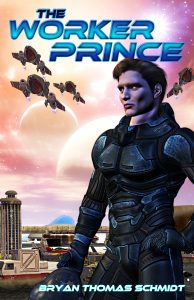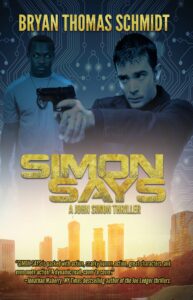 It’s been done. All too many times, if you listen to some. The story is world famous, well known. Many know its details by heart. Yet it’s compelling and you have an idea you know is different—one no one’s done before. So how do you keep it fresh? Adapting a well-known story for fiction has many challenges, but above them all is the issue of freshness, avoiding predictability.
It’s been done. All too many times, if you listen to some. The story is world famous, well known. Many know its details by heart. Yet it’s compelling and you have an idea you know is different—one no one’s done before. So how do you keep it fresh? Adapting a well-known story for fiction has many challenges, but above them all is the issue of freshness, avoiding predictability.
There are some techniques which work well to invigorate the retelling:
1) Use the original story as character history/backstory so the parallels are interesting but you don’t have to follow it to the letter—In The Worker Prince, my debut novel, because my characters are colonists to space from Earth and Protestants, they share the religious history of Christianity so the Moses story, which inspired mine, is prehistory. Some parallels from that story occur, when a prince discovers he was born a slave and helps the slaves fight for freedom, for example. But having established that as prehistory, I was able to depart quite a bit from biblical elements like the plagues, miracles, and parting of the Red Sea to tell a different, although familiar story. The inspiration remains the same but the story takes new and interesting twists.
2) Change the timeline (order)– What if the events are the same but they don’t happen in the same order? Sometimes the order of events is not vital to the story and you can make new twists and turns just be changing the order of events and, thus, how those various events affect each other. It can lead to new conflicts and new undercurrents which didn’t exist in the original story and make it more interesting for those familiar with the story on which yours is based.
3) Identify the core elements and throw away less important ones—In The Worker Prince I did exactly this: keeping the idea of one people enslaving another under a ruthless dictator, a prince secretly adopted from slaves, ideological conflict, and injustice but dumping things like the Red Sea, years of exile in a desert, plagues, etc. It kept the story familiar and grounded in the tropes of the original while allowing me to take it in totally different and surprising directions. Some scenes and events are vital for the story to remain familiar. The same can be said of key characters. Others can be thrown away or reinvented to keep things original and unique in your telling.
4) Reverse roles, species or genders of characters—What if your hero in the original story was male but in your story becomes female? What if a human character becomes alien or animal? What about a robot? What about other characters? Can your sidekick become the love interest? What if your antagonist becomes a relative instead of a social acquaintance? What if the characters take on bigger roles and multiple functions they didn’t have in the original? The differences between genders, species, etc. can then be exploited for new aspects of your story and new twists and turns different from the original in fun ways.
5) Change the setting—Setting your story in a culture and context far removed from the original can provide interesting opportunities. I set The Worker Prince in distant space far from Earth with different aliens and plant species, etc. It allowed me to have technology and related problems totally foreign to the original Moses story and made for a more fun and interesting telling for me as storyteller and for readers. The same can be true of resetting the story in a different decade or era from the one in which it originally occurred. Imagine, if you will, a steampunk Cinderella or Sherlock Holmes in the 24th Century. All kinds of possibilities present themselves.
All of these suggestions are about making the story your own. If you can find ways to do that, you can create a fresh experience and telling while utilizing powerful elements of the familiarity and themes of the original story. Grounding your story in a well-known tale, definitely has advantages. But a little creative rethinking can make it even more powerful and draw in an audience of people it might not otherwise appeal to. It’s fun to work from a familiar foundation and structure. Especially if you love the story, it can stimulate the imagination. But if everyone knows the twists and turns and outcome of your story, why should they want to read it? I hope these suggestions give you ideas how the old can become new and fresh in the retelling.
 Bryan Thomas Schmidt is the author of the space opera novels The Worker Prince—which received Honorable Mention on Barnes & Noble Book Club’s Best Science Fiction Releases of 2011—and The Returning, both from the space opera series Saga Of Davi Rhii. He also wrote the collection The North Star Serial, and short stories published in Tales Of The Talisman and the anthologies Of Fur And Fire and Wandering Weeds: Tales Of Rabid Vegetation, amongst others. A freelance professional editor and proofreader, he’s edited books for authors like Leon C. Metz, David Brown and Ellen C. Maze. He’s also the host of Science Fiction and Fantasy Writer’s Chatevery Wednesday at 9:00 p.m. Eastern Time on Twitter (#sffwrtcht), where he interviews people like Mike Resnick, A.C. Crispin, Kevin J. Anderson and Kristine Kathryn Rusch. He can be found online as @BryanThomasS on Twitter or via his website: www.bryanthomasschmidt.net. Excerpts from The Worker Prince can be found on his blog.
Bryan Thomas Schmidt is the author of the space opera novels The Worker Prince—which received Honorable Mention on Barnes & Noble Book Club’s Best Science Fiction Releases of 2011—and The Returning, both from the space opera series Saga Of Davi Rhii. He also wrote the collection The North Star Serial, and short stories published in Tales Of The Talisman and the anthologies Of Fur And Fire and Wandering Weeds: Tales Of Rabid Vegetation, amongst others. A freelance professional editor and proofreader, he’s edited books for authors like Leon C. Metz, David Brown and Ellen C. Maze. He’s also the host of Science Fiction and Fantasy Writer’s Chatevery Wednesday at 9:00 p.m. Eastern Time on Twitter (#sffwrtcht), where he interviews people like Mike Resnick, A.C. Crispin, Kevin J. Anderson and Kristine Kathryn Rusch. He can be found online as @BryanThomasS on Twitter or via his website: www.bryanthomasschmidt.net. Excerpts from The Worker Prince can be found on his blog.
3 5-star & 8 4-star reviews THE WORKER PRINCE $3.99 Kindlehttp://amzn.to/pnxaNm or Nook http://bit.ly/ni9OFh $14.99 tpb http://bit.ly/qIJCkS.




